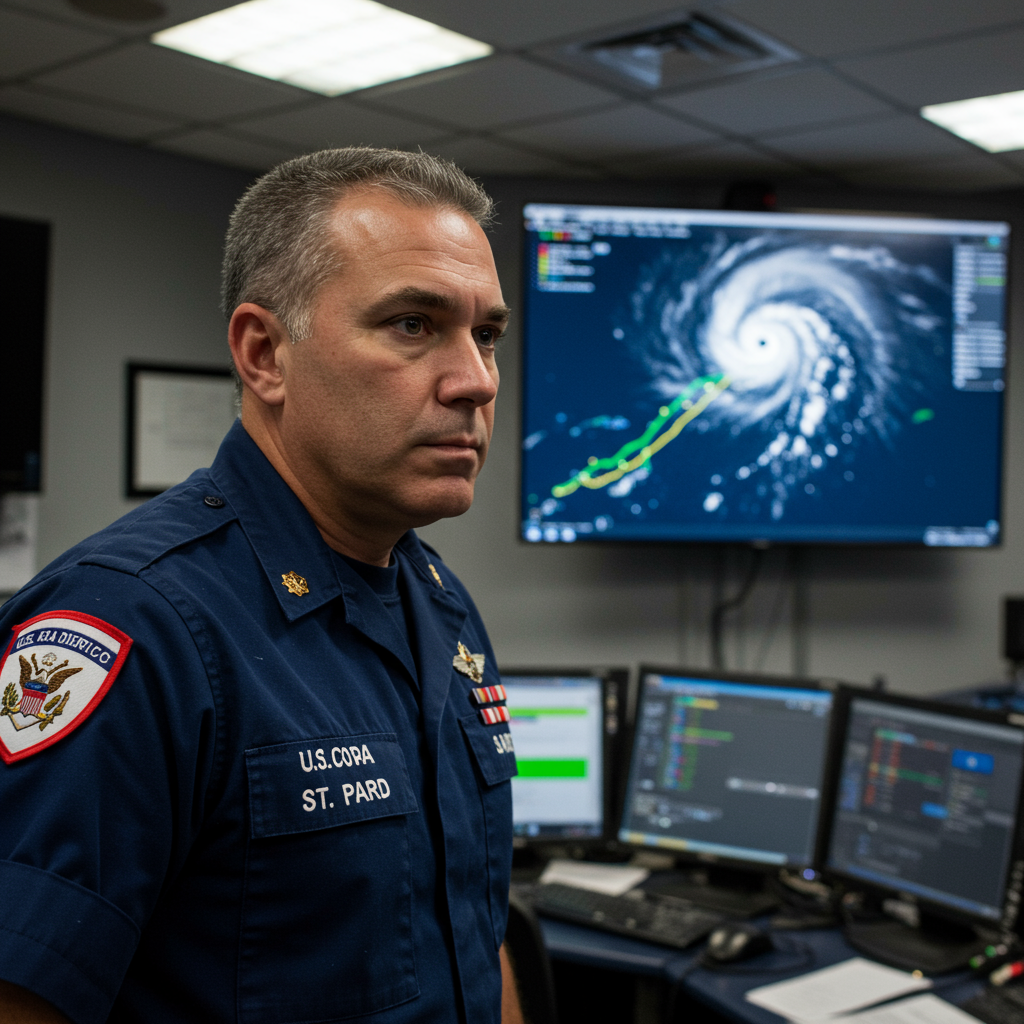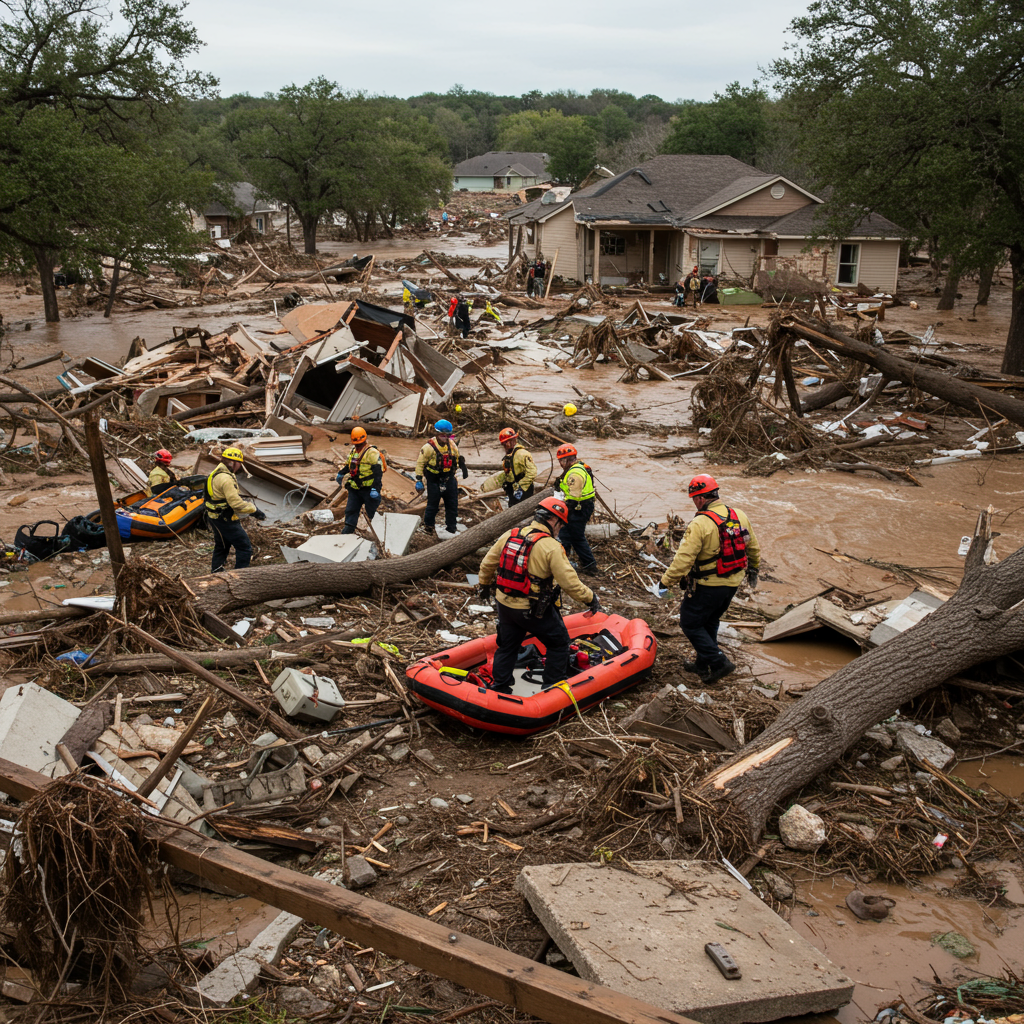The U.S. Coast Guard has issued a critical advisory for maritime communities across the U.S. Virgin Islands and Puerto Rico, declaring Port Condition YANKEE for several key seaports. This urgent measure comes as Tropical Storm Erin intensifies, posing a significant threat to navigation and coastal safety. Effective immediately for some areas, this declaration mandates strict restrictions on vessel movements, prioritizing safety as the storm approaches. Residents and mariners are urged to take immediate precautions and stay informed about evolving weather conditions.
Understanding Port Condition YANKEE: A Vital Safety Measure
When a tropical storm or hurricane threatens coastal areas, the U.S. Coast Guard implements a phased system of “Port Conditions” to manage maritime traffic and ensure safety. Port Condition YANKEE signifies that gale force winds (39-54 mph) are expected to make landfall within 24 hours. This designation triggers substantial restrictions, marking a crucial step in hurricane preparedness. It’s a clear signal for the maritime community to finalize all storm preparations.
This condition is a serious escalation from Port Condition X-RAY, which merely indicates gale force winds are expected within 48 hours. Under Port Condition X-RAY, commercial traffic can generally continue, albeit with increased vigilance. However, YANKEE introduces stricter controls. It’s a proactive measure designed to minimize risks to vessels, port infrastructure, and human life before the full force of a storm hits. The goal is to clear ports of non-essential traffic and secure facilities, preventing potential hazards during severe weather.
Affected Ports and Implementation Timelines for Port Condition YANKEE
The Coast Guard Captain of the Port – San Juan has explicitly directed the implementation of Port Condition YANKEE for multiple critical seaports across both the U.S. Virgin Islands and Puerto Rico. These directives are time-sensitive, requiring prompt action from all affected maritime stakeholders.
For the U.S. Virgin Islands, Port Condition YANKEE will take effect at 8 p.m. on Friday for the following vital locations:
St. Thomas
St. John
In Puerto Rico, the condition will be enforced slightly later, beginning at 8 a.m. on Saturday for these six significant municipalities:
Arecibo
San Juan
Fajardo
Ceiba
Vieques
Culebra
All other ports within both the U.S. Virgin Islands and Puerto Rico will remain under Port Condition X-RAY until further notice. This distinction is critical, as X-RAY permits continued commercial activity with caution, whereas YANKEE introduces severe limitations. It is imperative for all vessel operators and port authorities to be acutely aware of these specific timelines and locations.
Impact on Commercial and Oceangoing Vessels
The declaration of Port Condition YANKEE has immediate and significant implications for vessel traffic. Under this condition, all inbound vessel traffic is strictly prohibited. No new ships are permitted to enter the affected ports unless they have received explicit, specific authorization from the Captain of the Port. This is a critical safety measure designed to prevent vessels from being caught in dangerous conditions within confined harbor spaces.
Furthermore, oceangoing vessels measuring 500 gross tons and above face stringent requirements. Those with an approved application from the Captain of the Port are permitted to remain within the harbor. However, any oceangoing vessel of 500 gross tons or more that does not possess such an approved application must depart the port well before Port Condition YANKEE officially takes effect. Failure to comply can result in severe consequences, including significant safety risks and potential penalties. These rules ensure that only essential or pre-approved vessels remain in port, minimizing potential hazards during the storm.
Navigating Hurricane Erin: Critical Safety Advisories
Hurricane Erin continues its west-northwest track north of the islands, steadily gaining strength. The U.S. Coast Guard strongly cautions the entire maritime community to maintain extreme vigilance. Taking necessary precautions now is paramount to safeguarding lives and property. This advisory extends beyond vessel operators to include port facilities and the general public.
For Port Facilities and Operators
Port facilities play a crucial role in ensuring safety during a hurricane. Facility managers are strongly advised to meticulously review their heavy weather plans. These plans should detail procedures for securing all equipment, safeguarding cargo, and preparing infrastructure for high winds and potential storm surge. Taking all necessary precautions adequately prepares the facility for expected severe conditions. Communication channels should also be tested and confirmed, ensuring coordination with the Coast Guard and other emergency services. Securing cranes, loose containers, and any other potential projectiles is vital to prevent catastrophic damage.
Essential Guidance for Recreational Boaters
Owners of pleasure craft must take immediate action to protect their vessels and ensure their own safety. The Coast Guard strongly advises seeking safe harbor. This typically means moving boats to inland marinas or designated hurricane holes, where they are less vulnerable to breaking free from moorings or sustaining damage from rough waters.
Trailer-able boats should be removed from the water entirely. They must then be stored in a secure location that is not prone to flooding. For those who choose to leave their boats in the water, critical items must be secured or removed. This includes EPIRBs (Emergency Position Indicating Radio Beacons), life rings, lifejackets, and small dinghies. If these items are not properly secured, they can break free during the storm. This creates a significant problem: valuable search and rescue resources may be diverted to investigate floating debris, mistaking it for a person in distress. Preventing such false alarms saves critical time and resources for genuine emergencies.
Public Safety Measures on Land
Beyond maritime concerns, the general public must also prioritize safety and preparedness. Hurricane Erin poses a threat to all residents in the affected areas.
Secure Belongings
It’s not just boats that need securing. Homeowners should secure all loose outdoor items that could become airborne in high winds. This includes patio furniture, garbage bins, and garden tools. Secure windows and doors. Those living in flood-prone areas should take extra steps to protect their homes and belongings, such as moving valuables to higher ground.
Stay Clear of Beaches
Even before a storm makes landfall, wave heights and currents typically increase dramatically. Hurricane-generated swells can create extremely dangerous rip currents. Even the most experienced swimmers can be overcome by the powerful waves and strong currents associated with hurricanes. It is absolutely crucial for everyone to stay clear of beaches. Do not return to coastal areas until local lifeguards and law enforcement officials have officially declared the water safe.
Be Prepared: Your Family Disaster Plan
Every family should have a comprehensive disaster plan in place. This includes:
Creating a disaster supply kit: Stock up on non-perishable food, water, medications, flashlights, batteries, first-aid supplies, and other essentials.
Developing a family communication plan: Know how you will contact each other if separated.
Identifying a safe place to go: Know your evacuation routes and designated shelters if necessary.
Securing your home: Reinforce doors and windows if possible.
- Having a plan for pets: Ensure pets are included in your evacuation strategy.
Reliable information and resources for preparedness can be found on the National Hurricane Center’s and U.S. National Weather Service San Juan, Puerto Rico webpages, as well as Ready.gov and FEMA’s website, which offer resources in multiple languages.
Stay Informed
Monitoring the storm’s progress and strength is vital for continuous safety. The public should regularly check local television, radio, and internet sources for official updates. Boaters can specifically monitor storm progress, small craft advisories, and warnings on VHF radio channel 16. Staying informed ensures you can react swiftly to any changes in the forecast or official guidance.
The Coast Guard’s Vital Role in Storm Preparedness
The U.S. Coast Guard serves as a primary federal agency dedicated to maritime safety, security, and environmental stewardship. Their role during hurricane season is critical, coordinating efforts to safeguard shipping lanes, ports, and coastal communities. By issuing precise directives like Port Condition YANKEE, they ensure a systematic and timely response to unfolding weather events. Their advisories are not merely suggestions; they are directives aimed at preventing casualties and minimizing economic disruption. Their presence underscores the seriousness of impending storm conditions and the need for universal compliance with safety protocols.
Frequently Asked Questions
What exactly does “Port Condition YANKEE” signify for maritime traffic?
Port Condition YANKEE is a critical U.S. Coast Guard declaration indicating that gale force winds (39-54 mph) from a tropical storm or hurricane are anticipated to impact a port within 24 hours. Under this condition, inbound vessel traffic is generally prohibited unless specifically authorized by the Captain of the Port. Oceangoing vessels 500 gross tons and above, without prior approved applications to remain, must depart the port by the time the condition takes effect. This measure aims to clear harbors and secure facilities before severe weather arrives.
Which specific ports in the U.S. Virgin Islands and Puerto Rico are under Port Condition YANKEE?
For the U.S. Virgin Islands, the ports of St. Thomas and St. John are under Port Condition YANKEE, effective 8 p.m. Friday. In Puerto Rico, the ports in Arecibo, San Juan, Fajardo, Ceiba, Vieques, and Culebra are subject to Port Condition YANKEE, effective 8 a.m. Saturday. All other ports in these territories remain under Port Condition X-RAY until further notice, allowing continued, cautious commercial traffic.
What immediate actions should vessel owners and the public take during Port Condition YANKEE due to Hurricane Erin?
Vessel owners, especially those with recreational boats, should immediately seek safe harbor or remove trailer-able boats from the water, securing them in flood-free zones. All loose items on vessels, like EPIRBs and life rings, must be secured or removed to prevent them from becoming hazards. For the general public, secure all outdoor belongings, stay clear of dangerous beaches, and ensure your family has a disaster supply kit, a communication plan, and a designated safe place. Continuously monitor local news and official Coast Guard updates for the latest information.
Prioritizing Safety Ahead of Hurricane Erin
The declaration of Port Condition YANKEE underscores the severe threat posed by Hurricane Erin. This is a critical time for the U.S. Virgin Islands and Puerto Rico to prioritize safety. Adhering to Coast Guard directives and implementing personal preparedness plans are not just recommendations; they are essential actions to mitigate risk. Stay informed through official channels, act decisively, and ensure the safety of your family, property, and community. Your proactive measures today can significantly impact your safety during the storm.



